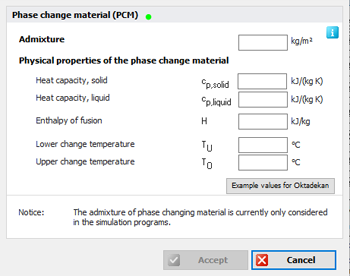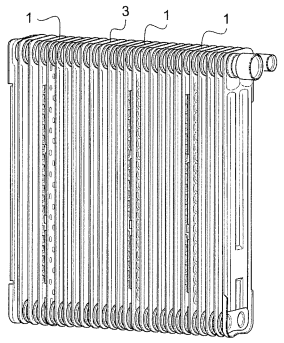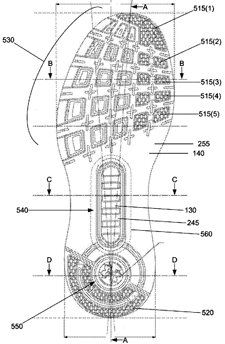 The Phase Change Matters e-mail newsletter is a weekly summary of the latest news and research on phase change materials and thermal energy storage. To subscribe, visit www.puretemp.com/subscribe. For more frequent updates, follow @puretemp on Twitter or visit the Phase Change Matters blog, www.puretemp.com/pcmatters.
The Phase Change Matters e-mail newsletter is a weekly summary of the latest news and research on phase change materials and thermal energy storage. To subscribe, visit www.puretemp.com/subscribe. For more frequent updates, follow @puretemp on Twitter or visit the Phase Change Matters blog, www.puretemp.com/pcmatters.
NEW PRODUCTS
Phase change material ensures a hot shower from the start
The morning alarm sounds. You wake up, hop in the shower, turn on the tap and … wait. The water might be ice cold for 10 seconds or more, as hot water makes its way from the heater. A Portuguese startup has developed a line of PCM-based products designed to eliminate the wait – and the waste.
 Heaboo’s Hoterway shower fixture incorporates a thermal battery that heats the water instantaneously until hot water arrives from the heater. The PCM then recharges as heated water passes through the battery. A thermal mixing faucet automatically keeps the incoming water at a constant temperature.
Heaboo’s Hoterway shower fixture incorporates a thermal battery that heats the water instantaneously until hot water arrives from the heater. The PCM then recharges as heated water passes through the battery. A thermal mixing faucet automatically keeps the incoming water at a constant temperature.
Heaboo, which delivered its first units to Kickstarter backers last year, also offers standalone thermal batteries designed to supply hot water to sinks, tubs and other fixtures.
Rui Teixeira, Heaboo founder and general director, talked about the products in an e-mail interview:
Q: What kind of PCM is used in the products?
A: “We are currently using a paraffin with additives in our products. We are also trying to use more conventional paraffin to reduce the cost of the PCM. The one that we are using has a heat storage capacity of 230 Joules per gram.”
Q: What is the PCM’s peak melting point?
A: “It depends on the specifications of the markets we are addressing. The first product uses a PCM with the melting point 45ºC, but for example in France they would prefer to have a PCM with a melting point above 50ºC; as they supply hot water at the temperature around 60ºC. There is not a big deal because we just need 4-5ºC of temperature differential to ensure that the material melts during the shower period.”
Q: How much PCM is used in each Hoterway?
A: “We are optimizing it but right now we should be talking about 5 kilograms.”
Q: Who is your PCM supplier?
A: “We currently have two European suppliers, but the main one is still Rubitherm from Germany.”
Q: In addition to Kickstarter, where you raised about 26,000 euros, what are your funding sources for this project?
A: “We had to seed investors in the R&D phases. We have four products already in the market and the sales are growing but not as we would like. 🙂
“We are also looking for industrial partnerships in order to adapt the technology to other application to diverse our source of income in this early stage and besides that we are looking for an additional investment mainly to optimize production processes and increase the go-to-market strategy.”
Q: How many units have you delivered so far, and how many do you expect to sell in 2018?
A: “Right now we have about 60 units delivered and most of them are installed already; we would like to finish 2018 with 500 units sold.”
Q: What kind of feedback are you getting from consumers?
A: “The feedback is great. The product does exactly as we announced and the users just get rid of the problem they had before. You simply install the product and the waiting time is gone.
“We announce the capacity of the device to be 10 liters after 24 hours from last use, but normally the customer has less quantity of water stagnated in the pipes. That means that they actually still get instant hot water even if they don’t use the shower for 48 hours and sometimes 72 hours. This is something highly valued by the customers because it seems that the device works better than we actually said to them.”
To read the full interview, visit the Phase Change Matters blog.
SOFTWARE
Hottgenroth adds PCM module to building simulation software
 The latest versions of Hottgenroth modeling software include simulation of phase change materials in buildings.
The latest versions of Hottgenroth modeling software include simulation of phase change materials in buildings.
“We included PCM in our components properties and can now calculate the given or taken energy hourly for every single room in an complete 3D model,” said Björn Wolff, industrial technology engineer at Hottgenroth Software GmbH & Co., Cologne, Germany.
“Especially for cooling loads it’s important to take the specific mass and heat capacity into account,” Wolff explained. “Our simulation is for the dynamic simulation of heat and cooling loads using worldwide climate data. If you know specific values of them we can also simulate renewable energies like PV, heat pumps, CHP, solar thermal, ice storage etc.“
PATENTS
Tube with a reservoir of PCM for a heat exchanger
U.S. patent application 20180106555 (applicant Valeo Systemes Thermiques, Le Mesnil Saint-Denis, France):
 “A tube with a reservoir of phase-change material [1] for a heat exchange bundle of a heat exchanger, said tube with a reservoir of phase-change material comprising: two flow plates [3] configured to be assembled with one another in a sealed manner and to form at least one conduit in which a first heat transfer fluid flows; at least one reservoir plate, said reservoir plate being configured to be assembled in a sealed manner onto an external face of one of the two flow plates so as to form housings for the phase-change material; and a filling duct for the phase-change material, one end of said filling duct opening into one of the edges of said tube with a reservoir of phase-change material, said filling duct being formed by a filling spout of the reservoir plate towards the outside and by the external face of one of the two flow plates, said filling duct further comprising a plug, said filling duct and said plug being contained within a volume of width smaller than or equal to the width of the tube with a reservoir of phase-change material and of height less than or equal to the height of the housings of the phase-change material.”
“A tube with a reservoir of phase-change material [1] for a heat exchange bundle of a heat exchanger, said tube with a reservoir of phase-change material comprising: two flow plates [3] configured to be assembled with one another in a sealed manner and to form at least one conduit in which a first heat transfer fluid flows; at least one reservoir plate, said reservoir plate being configured to be assembled in a sealed manner onto an external face of one of the two flow plates so as to form housings for the phase-change material; and a filling duct for the phase-change material, one end of said filling duct opening into one of the edges of said tube with a reservoir of phase-change material, said filling duct being formed by a filling spout of the reservoir plate towards the outside and by the external face of one of the two flow plates, said filling duct further comprising a plug, said filling duct and said plug being contained within a volume of width smaller than or equal to the width of the tube with a reservoir of phase-change material and of height less than or equal to the height of the housings of the phase-change material.”
Acoustical devices employing phase change materials
U.S. patent application 20180109858 (applicant Bose Corp., Framingham, Mass):
“An acoustical device comprising: a headphone having a cushion comprising: an outer layer configured to contact a headphone user; two or more phase change materials with an ability to change from solid phase to liquid phase or from one solid phase to a different solid phase at a predetermined phase-change temperature, wherein each phase change material has a different predetermined phase-change temperature; and padding; wherein the phase change materials are between the outer layer and the padding.”
Related: Earpiece employing cooling and sensation inducing materials (Bose Corp.)
Articles of footwear with cooling features
 U.S. patent application 20180103714 (applicant Under Armour, Baltimore, Md.):
U.S. patent application 20180103714 (applicant Under Armour, Baltimore, Md.):
“The present invention is directed toward an article of footwear effective to regulate the temperature of the feet of a wearer. In an embodiment, the article of footwear includes an upper and an insole with a thermal effect membrane. The thermal effect membrane contains a plurality of system-reactive components selectively engaged heat and/or moisture. In an embodiment, the printed coating includes a cooling agent, a phase change material, and a heat dissipation material. The bottom of the sole structure of the article of footwear further includes a multiple openings in the forefoot, midfoot, and hindfoot regions. The multiple openings promote airflow into the interior of the upper. In operation, the article of footwear is effective to delay/diminish the rise in skin temperature (compared to footwear lacking the membrane and/or openings), increasing wearer comfort.”
IN BRIEF
• The European Parliament has approved a revised version of the Energy Performance of Buildings directive. The directive aims to reinforce efficiency in the building sector, which accounts for about 40 percent of energy use in Europe.
• 1414 Degrees is installing a 25MWh demonstration of its silicon-based thermal energy storage system at a poultry processing plant in Australia.
• New market research from 99Strategy: “Global Micro-capsule Phase Change Composite Material Market 2018-2023: Industry Overview, Segment, Type, Application, Competition, Demand, Price“
• Thermal materials specialist va-Q-tec has signed a partnership deal with Unitrans Ltd. of Japan. Unitrans will begin offering temperature-control box fulfillment services in Osaka in June, expanding va-Q-tec’s global distribution network.
• The technical program at ASHRAE’s annual conference in Houston June 23-27 includes a session on “Principles and Practices of Thermal Energy Storage Systems for Air Conditioning.”
• On the list of short courses available at the American Oil Chemists’ Society annual meeting and expo in Minneapolis May 6-9: “Fundamentals of Oils and Fats Crystallization” (Alejandro Marangoni, University of Guelph) and “Improving the Bottom Line of Oils and Fats Refining” (Ken Carlson, RBD Technologies Inc.).
 • Traffic cops in Nagpur, India, are beating the heat with cooling vests that contain phase change material, Nagpur Today reports. At a glance, though, the thin vests [right] appear to rely mostly on evaporative cooling.
• Traffic cops in Nagpur, India, are beating the heat with cooling vests that contain phase change material, Nagpur Today reports. At a glance, though, the thin vests [right] appear to rely mostly on evaporative cooling.
• Cold chain solutions provider Cryopak is now offering deterministic container closure integrity testing methods at the company’s testing center in Edison, N.J. The methods will be used on flexible packaging, sealed containers and other packaging systems.
• Working in collaboration with Glaciem Cooling Technologies, the University of South Australia has completed work on a new refrigerated cooling system for the hospitality industry. The PCM-based system was installed at the Bend Motorsport Park in Tailem Bend, Australia. Glaciem’s ThermCOLD system uses a salt-based phase change material to store thermal energy, allowing refrigeration plants to run and store energy during off-peak periods, when electricity rates are lower, and then release energy during peak periods.
• Scientists at England’s University of Portsmouth have accidentally created a mutant enzyme that breaks down plastic drink bottles. “The mutant enzyme takes a few days to start breaking down the plastic – far faster than the centuries it takes in the oceans,” the Guardian reports. “But the researchers are optimistic this can be speeded up even further and become a viable large-scale process.”
• Ecozen Solutions of India, which makes portable solar cold rooms for use on small farms, is among 12 organizations shortlisted for the 2018 International Ashden Awards. The system’s thermal storage unit can store power for more than 36 hours in case of cloudy or rainy weather.
RESEARCH ROUNDUP
For our full list of recent academic research, see puretemp.com/academic. Here are highlights from the past week:
From Energy Reports:• Cold temperature performance of phase change material based battery thermal management systems
From Applied Energy:
• Design and functionality of a segmented heat-storage prototype utilizing stable supercooling of sodium acetate trihydrate in a solar heating system
• Macro-encapsulation and characterization of chloride based inorganic phase change materials for high temperature thermal energy storage systems
• Parametric analysis of a residential building with phase change material (PCM)-enhanced drywall, precooling, and variable electric rates in a hot and dry climate
From Composites Part A: Applied Science and Manufacturing:
• Fabrication of high thermal conductive shape-stabilized polyethylene glycol/silica phase change composite by two-step sol gel method
From International Communications in Heat and Mass Transfer:
• Performance enhancement of cold thermal energy storage system using nanofluid phase change materials: A review
From IOP Conference Series: Earth and Environmental Science:
• Development of form stable Poly(methyl methacrylate) (PMMA) coated thermal phase change material for solar water heater applications
From Thermochimica Acta:
• Fabrication of shape-stable composite phase change materials based on lauric acid and graphene/graphene oxide complex aerogels for enhancement of thermal energy storage and electrical conduction
From Procedia CIRP:
• Life Cycle Assessment of Innovative Materials for Thermal Energy Storage in Buildings
From Applied Thermal Engineering:
• Study on heat-transfer mechanism of wallboards containing active phase change material and parameter optimization with ventilation
NETWORKING
Connect with PCM experts and industry leaders on LinkedIn
 More than 1,200 people have joined a LinkedIn group devoted to the discussion of phase change material and thermal energy storage. The Phase Change Matters group is an interactive complement to the award-winning blog and newsletter of the same name.
More than 1,200 people have joined a LinkedIn group devoted to the discussion of phase change material and thermal energy storage. The Phase Change Matters group is an interactive complement to the award-winning blog and newsletter of the same name.
You are invited to join the group and connect with PCM and TES experts from around the world. This week we welcome Ron Leppers, director at SGS Intron B.V., Culemborg, Netherlands; Seth Parker, director at Melink Geo & Solar, Dayton, Ohio; Abhijeet Dhakane, graduate research assistant at Microscale Thermophysics Laboratory, Arlington, Texas; and Joey Anthony, development engineer (combustion) at Daikin Applied Americas, Plymouth, Minn.